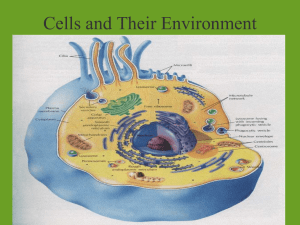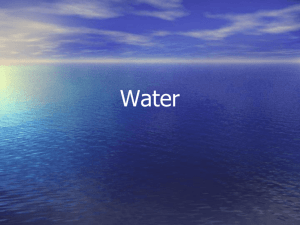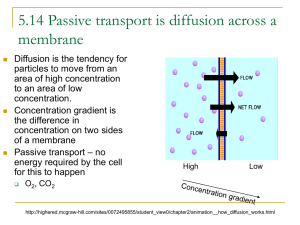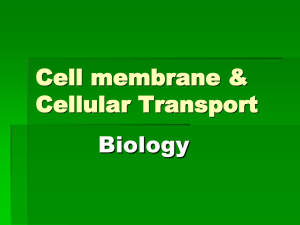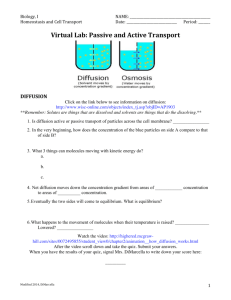Diffusion
advertisement
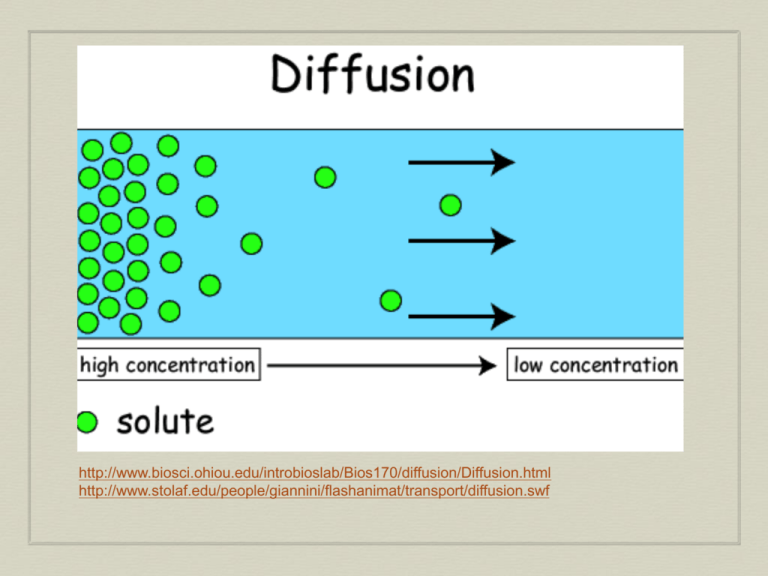
http://www.biosci.ohiou.edu/introbioslab/Bios170/diffusion/Diffusion.html http://www.stolaf.edu/people/giannini/flashanimat/transport/diffusion.swf Membranes can impede diffusion semi-/selectively permeable http://highered.mcgraw-hill.com/sites/0072495855/student_view0/chapter2/animation__how_osmosis_works.htm Membrane proteins aid diffusion of specific molecules act as carriers, form channels http://highered.mcgraw-hill.com/sites/0072495855/student_view0/chapter2/animation__how_facilitated_diffusion_works.html EX: Insulin receptor triggers the movement of glucose transporters to the CM these transporter proteins facilitate the diffusion of glucose across the membrane When the molecule diffusing is water, it’s called osmosis Less solute concentration Therefore more free energy (no energy expended to diffuse water) 2 factors: • solute/solvent concentrations • pressure http://www.youtube.com/watch? v=Q_qZLB5CeGk&feature=rela ted Water is polar, thus uses a membrane protein to facilitate osmosis An aquaporin A cell’s environment is described in terms of solute amount, relative to cell contents Less solute Hypotonic equal solute isotonic more solute hypertonic Describe based on its effect on cells too - flaccid or turgid? http://www.youtube.com/watch?v=44igB-0PVqA http://www.youtube.com/watch?v=V4TNL1qIKAQ&NR=1 Cells with a cell wall can handle the pressure Cells without a wall need a strategy otherwise the can burst, i.e. RBC Protists – like Paramecium live in a hypotonic environment - they ‘bail’ excess water via the contractile vacuole http://www.youtube.com/watch?v=9Ynm5ZOW59Q&feature=related Animals avoid burst cells via osmoregulation balancing salt & water concentrations of cells & environment excrete water drink water excrete salts Marine invertebrates are at equilibrium with their environment they are salty! Cartilagenous fish retain urea, other organics to lower water potential of cells Human excretory system strategy: filter all reabsorb some kidney nephron http://www.hhmi.org/biointeractive/cardiovascular/kidneyfunction.html Active transport requires cells expend energy to move molecules up (against) the concentration gradient i.e. diffusion & osmosis Ex: sodium/potassium pump 1. Active transport of ions from soil 2. Plants use active transport to concentrate minerals in the root cells, creating a concentration gradient; water follows via osmosis Opposite direction of difusion Coupled transport uses a molecule going down the gradient to transport another against the gradient http://highered.mcgraw-hill.com/sites/0072495855/student_view0/chapter2/animation__how_the_sodium_potassium_pump_works.html Phagocytosis = solids Pinocytosis = liquids receptors on CM can trap target molecules, trigger endocytosis http://highered.mcgrawhill.com/olcweb/cgi/pluginpop.cgi?it=swf ::535::535::/sites/dl/free/0072437316/12 0068/bio02.swf::Endocytosis%20and%2 0Exocytosis

